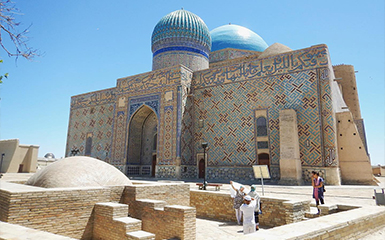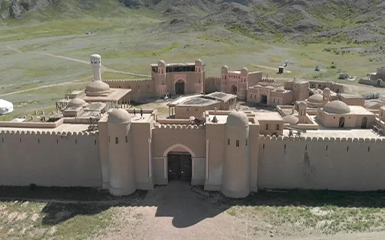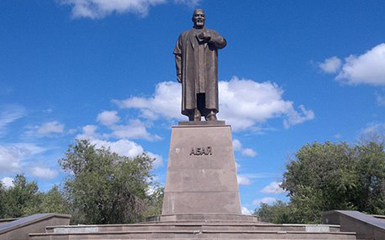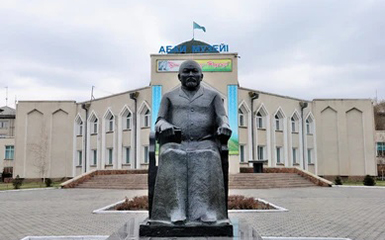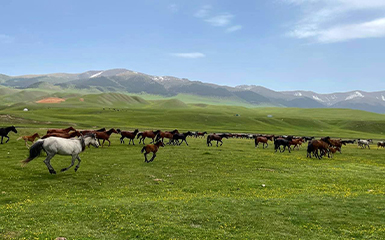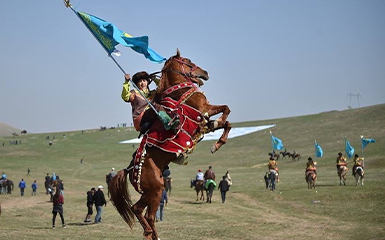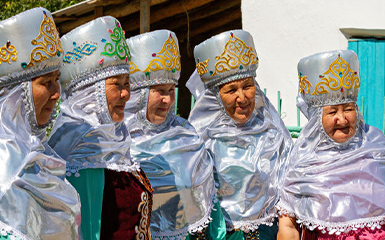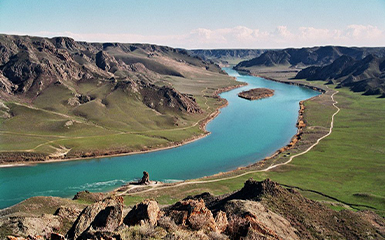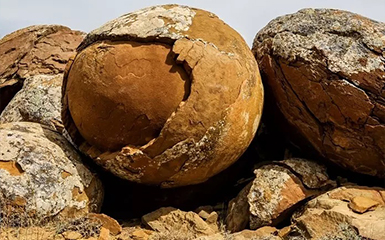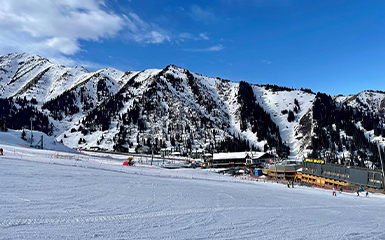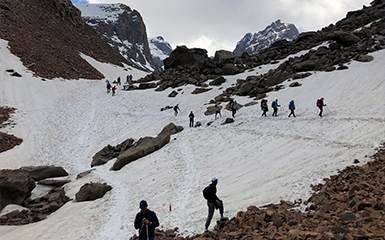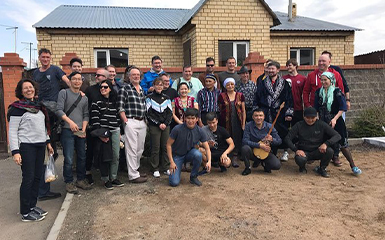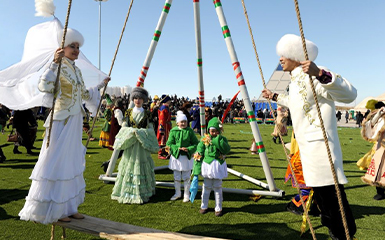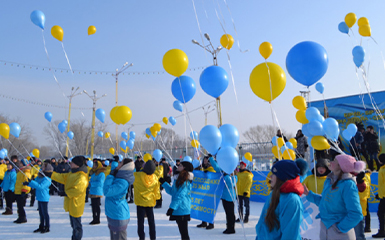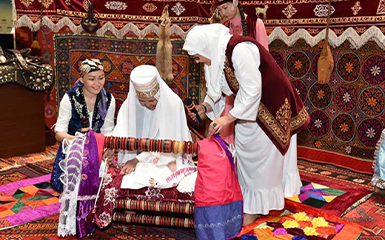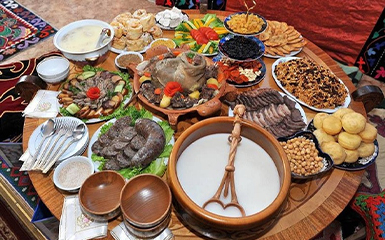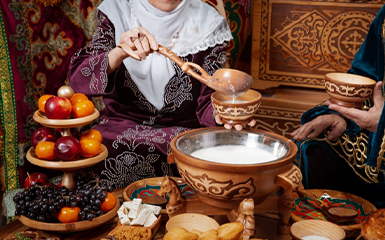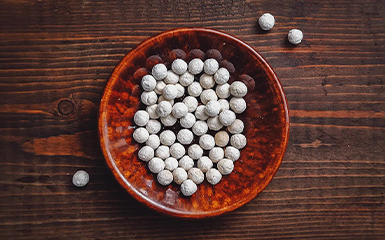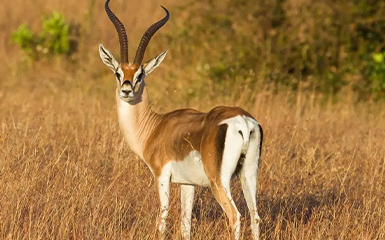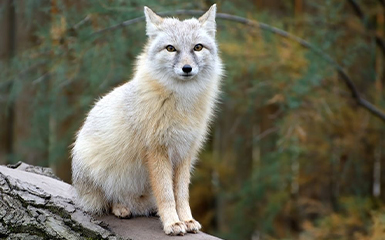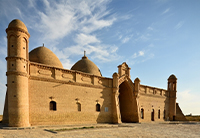
Arystan Bab
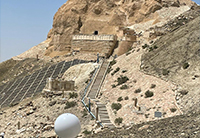
Becket Ata
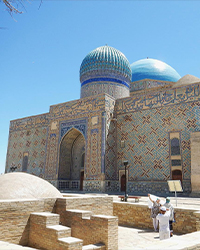
Hodja Ahmad
Yesevi
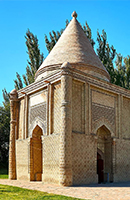
Aisha Bibi
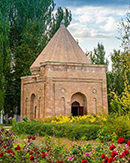
Babaji
Khatun
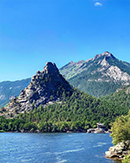
Burabay
lake
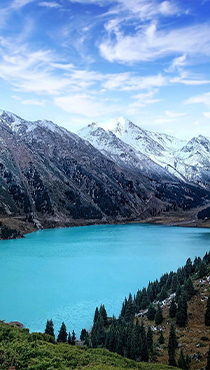
Almaty
Lake
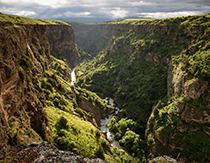
Aksu
Zhabagly
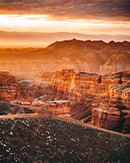
Charyn
Canyon
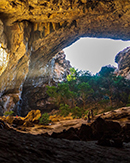
Holy Cave
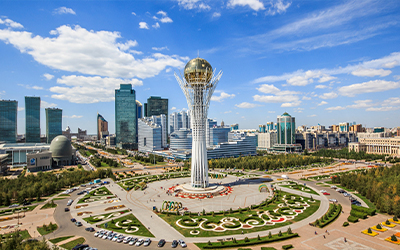
Nur Sultan
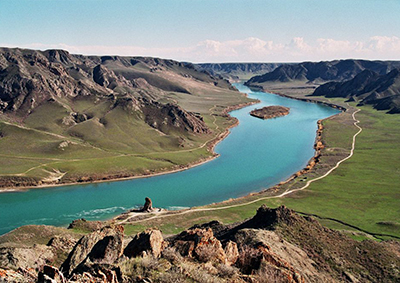
Balkash Lake
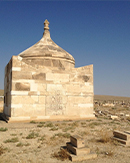
Shopan
Ata
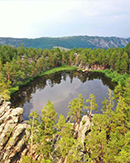
Shaitankol
Lake
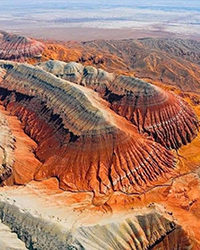
Altyn Emel
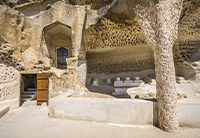
Shakpak-ata
Cave
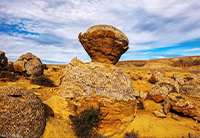
Torysh
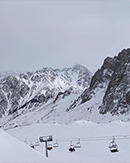
Shymbulak
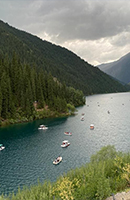
Kolsai
Lake
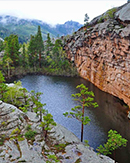
Karkaraly
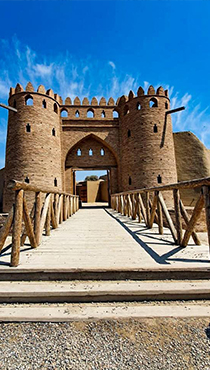
Otrar
ruins
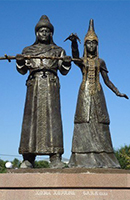
Kozy Korpesh
Bayan Sulu
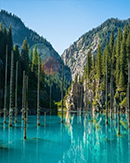
Kaindy
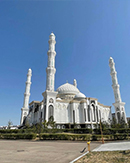
Azret
Sultan
Kazakh land is located in the centre of Eurasia, with the bright influence of nomadic, Soviet and modern times. The beginning of the world's largest endless pasture steppe, marked by waves of mountains, wildflowers and quiet towns. Travel cross-country on the modern-day Orient Express, crossing fields where freedom-loving tribes once tamed the wild horse.
On either side of this vast expanse stretching from the Caspian Sea to China are cities lined with remnants of the past and bold displays of innovative architecture, while country-sized national parks are lined with a myriad of natural colours that reflect every season.
The determined people of Kazakhstan, who are eager for their country and national values to be known by the world, welcome the visitors with open-heartedness and traditional hospitality.
Kazakhstan has been inhabited since the Paleolithic era. It developed in the Neolithic period, as the climate and terrain of the region were most suitable for a nomadic lifestyle.
Cossack lands were an important component of the Eurasian commercial Steppe Road, the ancestor of the terrestrial Silk Roads. Archaeologists believe that humans first domesticated the horse (ponies) in the region's vast steppes. In 329 BC, Alexander the Great and his Macedonian army fought along the Jaxartes River against the Scythians in the Battle of Jaxartes, now known as Syr Darya along the southern border of modern Kazakhstan.
Real political consolidation only began with the Mongol rule of the early 13th century. Administrative regions were established during the Mongol Empire, the largest in world history. These eventually came under the rule of the emerging Kazakh Khanate.
During this period, a traditional nomadic life and an economy based on livestock continued to dominate the steppe. In the 15th century, a separate Kazakh identity began to emerge among the Turkish tribes. This was followed by the Kazakh War of Independence, in which the khanate won its sovereignty from the Shaybanids. The process was reinforced by the emergence of the Kazakh language, culture and economy in the mid-16th century.
At its peak, the Khanate would rule parts of Central Asia and control Kumanya. In the early 17th century, the Kazakh Khanate was struggling with the influence of tribal rivalries. Political division, tribal rivalries, and the decline of the importance of land trade routes between east and west weakened the Kazakh Khanate. Khiva Khanate used this opportunity to annex the Mangishlak Peninsula. Uzbek domination there lasted for two centuries until the arrival of the Russians.
The Cossacks suffered from frequent raids of the Volga Kalmyks against them. After the Dzungar and Kalmyk raids, the Kokand Khanate exploited the weakness of the Kazakhs and conquered current Southeast Kazakhstan. In addition, the Emirate of Bukhara ruled Shymkent before the Russians gained dominance.
Beginning in the 1890s, an increasing number of settlers from the Russian Empire began to colonize the territory of present-day Kazakhstan. In the 19th century, about 400,000 Russians immigrated to Kazakhstan, and in the first third of the 20th century, about a million Slavs, Germans, Jews, and others immigrated to the region.
The competition for land and water between the Cossacks and the newcomers caused great resentment against the colonial administration in the last years of the Russian Empire.
On December 5, 1936, the Kazakh Autonomous Soviet Socialist Republic (whose territory until then corresponded to the territory of modern Kazakhstan) broke away from the Russian Soviet Federative Socialist Republic and formed the Kazakh Soviet Socialist Republic.
Kazakhstan declared its independence on December 16, 1991, thus becoming the last Soviet republic to declare its independence.
Abai was born in 1845 as Ibrahim Qunanbaiuly in the family of a Kazakh head (Bij) in what is now East Kazakhstan in the Chingiz Mountains. Because of his intellectual abilities, he was nicknamed Abai - "the clever, the insightful", by which he later became known.
During childhood, Abai studied in the madrasah of Ahmed-Riza and at the same time in a Russian regional school. He started writing poetry at the age of 13. He was passionate about reading and learning about the works of Europe's great poets and writers. Alexander Pushkin, Michail Lermontow, Johann Wolfgang von Goethe and Lord Byron exerted a particularly strong influence on the young poet. The influence was so strong that he was the first to translate some of the works of the aforementioned poets into Kazakh.
Abai had to devote his youth to administrative work in his tribe, which he detested. In the early 1880s, he met some important Russian intellectuals who had been exiled to Kazakhstan for their liberal views. In the conversations with them and the uninterrupted self-study, Abai's views were finally formed.
In his early 40s, he started writing in earnest. His poems, aphorisms and philosophical writings also received great attention among Russians. Already during his lifetime, he was venerated among Kazakhs and the neighbouring peoples. People from all parts of the great steppe came to him for advice or to discuss things.
However, his frequent attacks on the patriarchal, conservative, semi-feudal social structures of the Kazakhs created many enemies among the upper class for him. The poet was the victim of denunciations, slander and even attacks.
The importance of Abai for Kazakh literature, culture and even the cultural development of the people is generally considered very high. In his poems, stories and pieces of music he used many genres and forms that were previously unknown in Kazakh literature and music. As a highly educated person who spoke many languages, he translated numerous classics of world literature into Kazakh and saw to it that new schools were opened in order to make this legacy of world culture accessible to broad sections of the population.
Abai also made the rejection of violence ("Iskander") an issue in his works and covertly criticized the autocracy. He dealt a lot with the Islamic philosophy of the middle Ages.
In modern Kazakhstan, Abai has become a national symbol. His writings have been translated into more than 60 languages. The city of Abai in the Karagandy area is named after him, and the Kazakh National Pedagogical University and the Abai Opera House in Almaty bear his name. The two-volume biography of the poet - The Way of Abai ("Abai shol") by Mukhtar Auezov is considered one of the best books in modern Kazakh literature.
In his hometown of Semei there is the Abai Qunanbaiuly Literature Museum in honour of the poet.
An excavation in Kazakhstan in 2009 found evidence that horses were domesticated in the region about 5,500 years ago. The discoveries suggested that horses were ridden and milked by people living in the area around 1,000 years before it was believed that humans began using horses. Radiocarbon dating has revealed these remains to be around 5,500 years old - a much older period than the Ancient Egyptian Kingdom or ancient Sumerian Mesopotamian culture or even the Mohenjo-Daro civilization of modern Pakistan.
Equine sports and food products, the cradle of the once nomadic, horse-loving Kazakh national identity, are common. Kökpar, another version of the game of polo, is popular in the countryside. Kumys, fermented mare's milk, remains the favourite drink of spring, and no Kazakh feast would be complete without the thick slices of kazy (horsemeat sausage) that liberally adorned the table.
Strong evidence indicates that it was the Botai civilization that first domesticated the horse. Research and analysis of excavated pottery and other artefacts combined the idea that ancient inhabitants of present-day Kazakhstan used horses to assist them in their daily lives.
The horse, its symbolism and history are woven into the fabric of Kazakh culture and present-day Kazakhstan while the Great Steppe people domesticated horses thousands of years ago. The world cultural community recognizes the unique and special role that horses play in Kazakh culture. UNESCO has included Kazakh horse breeders' traditional Spring Festival Rites on the Representative List of the Intangible Cultural Heritage of Humanity (ICH).
New hippodromes and racetracks were opened in Almaty, the country's largest city, and in Nur-Sultan, the new capital of Kazakhstan. Equestrian centres have sprung up, and equestrian hiking in the country's national parks and mountains is among the popular pastimes.
Kazakhstan emerged from the mists of history as both the most modern and the oldest nation along the legendary Silk Road. Moreover, the long valued equestrian culture has been important to the advancement of humanity.
Kazakh clothing worn by Kazakh people is usually made of materials suitable for the extreme climate of the region and the nomadic lifestyle of the people. It is often adorned with elaborate ornaments made from bird beaks, animal horns, hooves, and feet. While contemporary Kazakhs generally wear Western clothing, Turkic people wear clothing that is more traditional on holidays and special occasions.
Traditional materials used in sweater clothing include fabric, leather, felt and fur. Embroidery, fur, jewellery and trim can also be used for decoration. Imported materials such as silk, brocade and velvet can also be used for clothing, but are more expensive than traditional materials. Traditional materials such as horse hair, fox fur, sheep wool and rabbit skin are used in the production of clothing.
Kazakhs usually use white wool and value the wool on the neck of the sheep. The feathers of the Bactrian camel are also used for more clothing that is luxurious. Imported cotton, silk and woollen fabrics were used by Kazakh nomads. Feudal nobles used imported fabrics to make their clothes; less affluent Kazakhs wore more readily available materials such as fur, leather, and homemade wool.
Kazakh traditional dress for girls and young women, locally called koilek. Kunikey koilek is made of light, fluffy material densely gathered at the waist. Usually unmarried girls wear it. The main type of outerwear was shapan. Kaptal is another model with warm lining. Another type is the fur-trimmed shabu. Zhargak shapan is for occasions and is appropriately decorated with ornamental patterns. The type of shoes common among Kazakhs were lightweight, tight-fitting boots without heels, called ichigi or masi. Leather kebis, which had to be postponed at the entrance of the house, were worn on them.
Wearing hats and caps is indispensable for Kazakh traditional clothing. By the type of headdress a person wore, they could tell which class they belonged to. Kalpak is stylish, useful and protects from heat in summer and cold in winter. Another traditional men's headdress is borik - a round warm headdress decorated with the fur of astrakhan otter, marten or raccoon. In the harsh winter cold, men wear the tymak, a three-bladed fur hat with a pair for the ears and a longer and wider cap towards the back for the rear head. One of the common male headdress models since ancient times is the kulapara, a type of headgear worn by hunters, berkutci and shepherds. The girls wore two types of hats: a skullcap (Takiya) and a warm hat (Borik) decorated with otter, fox or beaver fur. The Kazakh women's national bridal hat Saukele, which is a high (70 cm) conical hat, is especially important.
The National State Museum of Kazakhstan is a treasure house where you can find many wonderful examples of Kazakh traditional clothing. Here, clothes belonging to important figures of Kazakh history, batyrs, raiders and artists, especially the stage costumes of famous singers are exhibited.
Since Kazakhstan stretches on both sides of the Ural River, which is considered the line that separates the European continent, it is one of the two landlocked countries in the world that have lands on two continents (the other is Azerbaijan).
With an area of 2,700,000 square kilometres (1,000,000 sq mi) - the equivalent size of Western Europe - Kazakhstan is the world's ninth largest country and largest landlocked country.
The terrain of Kazakhstan stretches from the Caspian Sea to the Altai Mountains from west to east, and from the plains of West Siberia to the oases and deserts of Central Asia from north to south. With an area of approximately 804,500 square kilometres, the Kazakh Steppe covers one-third of the country and is the largest dry steppe region in the world. Large areas of grassland and sandy areas characterize the steppe. Major seas, lakes and rivers include Lake Balkhash, Lake Zaysan, the Charyn River and its strait, the Ili, Irtysh, Ishim, Ural and Syr Darya rivers, and the Aral Sea, until it largely dried up in one of the world's worst environmental disasters.
Kazakhstan has an "extreme" continental climate with hot summers and very cold winters. Indeed, Nursultan is the second coldest capital city in the world after Ulaanbaatar. Precipitation varies between arid and semi-arid conditions, with winters particularly dry.
Kazakhstan has ten nature reserves and ten national parks that provide safe havens for many rare and endangered plants and animals. Common plants include Astragalus, Gagea, Allium, Carex and Oxytropis; endangered plant species include native wild apple (Malus sieversii), wild grape (Vitis vinifera) and several wild tulip species (eg Tulipa greigii) and rare onion species Allium karataviense, as well as Iris willmottiana and Tulipa kaufmanniana. Kazakhstan's 2019 Forest Landscape Integrity Index average score was 8.23/10, ranking 26th out of 172 countries worldwide.
Common mammals include the wolf, red fox, corsac fox, deer, argali (the largest species of sheep), Eurasian lynx, Pallas cat, and snow leopard, some of which are protected. Kazakhstan's Red Book of Protected Species lists 125 vertebrates, including many birds and mammals, and 404 plants, including fungi, algae and lichens.
The beauty of Kazakhstan is rather underestimated. The country is still largely unexplored, so you could be one of the first tourists to experience the beauty of the steppes and mountains in this Central Asian country.
Before visiting Kazakhstan, you should consider the weather. The weather in Kazakhstan is quite predictable, as the steppes provide a clear demarcation of the seasons. It is quite cold in winter and hot in summer. There is very little precipitation throughout the year, so you do not have to worry.
The best time to visit Kazakhstan is during the summer months, when the weather is great, between July and August. It gets hot, but not too hot for humans to handle. This is also the best time for hiking.
April-June and September-October are also good months to visit Kazakhstan. This is when to visit Kazakhstan if you want to travel on a budget and avoid the heat. The mountains are lush and beautiful during these months, and some ski slopes open in September and October too. There are fewer people in the country this season, so you will also be able to find discounted tickets and accommodation.
Spring weather is ideal for outdoor exploration - after all, all of Kazakhstan awaits you. Kazakhstan has typical Asian weather, which means it is hot during the summer months. The temperature climbs to around 80°F, but it is possible to withstand this weather, especially if you are in the mountains. During this time, the plants will bloom all over the mountains and you will be able to start trekking.
Kazakh Mountains offer a unique opportunity for hikers. These nature trails are pristine and untouched and will definitely offer you views of a lifetime. Head to the Tien Shan or the Great Almaty Gorge to experience the real Kazakh scenery. In the latter, you will also be able to see the melting glaciers and the beautiful Big Almaty River. You can even hike in the Medeu and Shymbulak mountain complexes, where you can trek and skate to the fullest! For an incredibly unique experience, attend the 'Save Balkhash' biker festival. Do something fun and contribute to ecological protection!
Around September, the summer heat begins to fade away, and autumn weather sets in. The temperatures are rather mild, but there might be some rainfall towards the end of the season. It is highly recommended that you carry a rain jacket with you when traveling during this period.
Winters in Kazakhstan are incredibly cold and the whole country is covered in snow for about 100 days. Before going out to the steppes, you should make sure that you carry all your thick clothes with you and that you are sufficiently prepared for winter. For those who cannot stand sub-zero temperatures, of course, not the best time to visit Kazakhstan.

Airlines
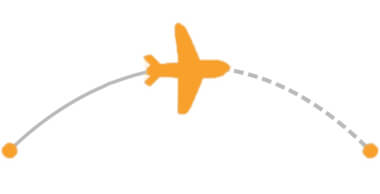














Kazakhstan is a huge untouched country. Most are quite wild, arid and desert. It is one of the few places in the world that can still be considered a remote place.
It is a country where you can find lush valleys, glacial lakes, snow-capped mountains and modern cities as well as arid plains.
Kazakhstan has a beautiful culture and everything to attract foreigners.
Tourism in Kazakhstan is growing and the country is becoming more and more popular. Aside from the amazing landscapes that can be found throughout the country, Kazakhstan is generally a very safe destination.
Like its neighbouring countries Kyrgyzstan and Uzbekistan, Kazakhstan has been placed in Level 1 countries by the US Department of State, making it among the safest countries in the world to travel to.
The country is considered safer than destinations such as France and Germany, which are Level 2 countries.
There is a growing number of tourists in Kazakhstan, and almost all report feeling very safe in the country. People in Kazakhstan are generally very hospitable and generous to foreigners visiting their country.
Theft and petty crimes do happen, but rarely involve foreigners.
Many female travellers visiting Kazakhstan ask themselves if Kazakhstan is safe for women. In Kazakh culture, men do not approach foreign women very easily. In addition, we have never heard of foreign girls being harassed on the streets. This seems to be something not common in Kazakh culture.
Kazakh men (or women) like to start a conversation by asking if you are married. This is a very common question in Central Asian culture, and it does not necessarily mean they want to seduce you. For them, it is the same as asking you about your education or your job.
It is very important that you let a friend know you are leaving and for how long, as cell phone connectivity is not at its best in the mountains around Almaty.
Road infrastructure in Kazakhstan has improved a lot in recent years. New highways connect major cities across the country, making driving in Kazakhstan much more comfortable and safe than before.
An important factor to consider when driving in Kazakhstan is the great distance between gas stations.
Vegetarians may find it difficult to travel around the country, but there are many international restaurants in big cities like Astana and Almaty where it is okay to find a meatless meal.
Modern healthcare services are not available everywhere in Kazakhstan. Overall, healthcare personnel are knowledgeable, but the system lacks the modern healthcare technology available in the rest of the world. There are very limited number of health personnel who speak English.
Holidays in Kazakhstan are treated with respect and reverence. Kazakhs love to enjoy life and whether it is every holiday, anniversary, wedding or official event; they love to celebrate on all scales with cheerful music, concerts, local food and a large crowd of people.
New Year. This is an international festival widely celebrated in Kazakhstan.
International Women's Day. The holiday falls on a wonderful time for beautiful women, now when nature wakes up.
Nauryz is a very ancient holiday that has been celebrated in Kazakhstan for 5,000 years. It is a celebration of spring and the renewal of nature.
According to ancient chronology, the holiday fell on March 22 - the day of the vernal equinox. On this basis, the Cossacks decided to call the first month of spring in honor of the holiday.
Victory day. This day is a holiday light memory of fallen heroes. Eid with respect, gratitude and pride.
During the war years, Kazakhstan made a great contribution to the victory over Germany. The country has hosted evacuated businesses and refugees.
That day – all the people of the Republic of Kazakhstan congratulate their veterans. There are many concerts, promotions and fairs in the city. It offers awards, diplomas and awards.
August 30 is the Constitution Day of the Republic of Kazakhstan. On this day, the basic law of the country was adopted. On weekends, the streets are decorated with balloons and flags. Organize exhibitions, concerts with the stars, shows and sporting events in the capital.
Independence Day of the Republic of Kazakhstan is the most important national holiday of the Republic. The whole republic celebrates the anniversary of the founding of the state in a bright and fun way.
Ramadan Hait is a holiday of moral and spiritual purification. Fasting lasts 30 days and is a ritual of moral and spiritual purification.
Kurban Hait is one of the biggest holidays in the Islamic world. As with the previous holiday, Ramadan celebrated 70 years after the end of Hait.
The People's Unity Day of Kazakhstan was established in 1996, replacing the International Workers' Day celebrated in Soviet times. Representatives of more than 150 nationalities have lived in Kazakhstan for centuries, and today the people of Kazakhstan celebrate one of the main principles adopted in the country, “Unity in Diversity”.
Kazakh people are rich in traditions. From birth to old age and death, every step of their life has been historically marked with celebrations. Even funerals have their own special symbolism.
Unfortunately, many rich and interesting customs and traditions of the Kazakh people have been forgotten over the past century. Due to the democratization process, real sovereignty is yet to be re-established in Kazakhstan. Kazakh people are now rediscovering these abandoned traditions. These traditions include respecting the elderly; to be patriotic to the homeland; being honest; and learn to love humanity.
Traditionally, Kazakh cuisine is served to each guest at dastarkhan (low table) in a yurt.
Yurt is one of the most logical types of portable homes. One of the greatest inventions of the Eurasian nomads, it is a comfortable and practical home ideally suited to local conditions and lifestyles.
It is easily disassembled (it is said that the Kazakh woman can do it in half an hour) and is carried by horses and camels. The yurt consists of three main elements: an expandable lattice base (kerege), a dome made of pillars (uyk), and a round top (shanyrak).
Crafts - harnesses, felt mats (tekemets) and items made of wood, bone and metal - are lavishly decorated. Headdresses, dresses, bags and saddlebags are beautifully embroidered. They use traditional designs and carvings to make and decorate the wooden vessels, large bowls and ladles used for kumiss (fermented mare's milk).
Hospitality is everything for Kazakh people. Kazakh host will feel uncomfortable if a guest does not have a drink or at least a cup of tea. Treats include dried and fresh fruit (grapes or melon), nuts, cakes or baursaks (a type of bread). They may also be offered fermented kymyz (female horse milk) to drink. Tea and kymyz are served in a piala (Asian teacup) or wooden bowl. A guest is usually offered a place of honour at the table.
If invited to a person's dormitory (tent-like residence), diners go out to wash their hands before eating. First, the prayer is prayed and offered to the guest. Eating is usually done with the right hand or with a fork and knife. Tea is usually served after dinner.
A unique tradition in Kazakhstan is dastarkhan, which is a feast for visiting guests and a feast for special occasions, which includes meat dishes and dairy products. Appetizers can be smoked or boiled meat, zhuta (pasta filled with zucchini or carrots), and flat cakes. Vegetables, sorpa (rich broth) and shubat (milk drink) can then be offered. A whole animal, usually a sheep, is slaughtered for the feast, and the oldest member of the family serves the family by carving his head. It is considered an honour in Kazakhstan. Beshbarmak is boiling the meat of the animal and putting it on a serving plate with the dough boiled in the broth. Different parts of the animal symbolize traits desired by those who eat them. For example, ears are often presented as a symbol for children to listen better. The one who receives the eye must seek wisdom, and the language means that one must be more expressive.
Kazakhs were herders who for hundreds of years raised qazaqi qoy (fat-tailed sheep), cattle, ayir tuye (Bactrian camel), and at (horse). Kazakh nomads relied heavily on their animals for transportation, clothing, and food. They usually ate mutton (sheep), milk, cheese and pita cooked on a grill.
Kazakh nomads migrated from region to region depending on suitable water and pastures for their animals. They also produced goods for which they traded grains, vegetables and fruits in markets in the more settled cities of Southern Kazakhstan. Cone-shaped tents, called yurts, were their homes that were easy to set up disassemble and move.
Kazakhstan is a large country stretching from the Caspian Sea to the Altai and from the Urals to the Tien Shan. It is not surprising that there is such a diverse and unique fauna and flora in this vast region with various natural and climatic zones.
There are 68 tree species, 266 shrub species, 433 semi-shrub and semi-grass species, 2,598 perennial grass species and 849 annual grass species in Kazakhstan's flora. About 500 species are endemic. This means they can only be found in Kazakhstan and in limited areas only.
The landscape of Kazakhstan is mostly steppes, semi-deserts and deserts. However, some northern regions of Kazakhstan largely belong to the forest-steppe zone, and Kazakhstan's Altai is mostly covered with true taiga forests.
Forests, including Haloxylon forests, cover only 4.2% of Kazakhstan's territory. These are birch and aspen forests of the northern regions, island forests in the northwest and the right bank of the Irtysh, pine forests of the Kazakh shallow ground, mixed and coniferous forests of Altai and Saur, Jungar Alatau and Tien Shan.
It may seem like there is very little vegetation in the Kazakh steppes, but this is actually not the case. Feathergrass, sheep fescue, Anabasis salsa, ferula and wormwood - plants perfectly adapted to life in the harsh dry climate grow there. Plants with a powerful root system, the leaves of which are covered with a thick bark, take root here. Steppe shrubs such as haloxylon and turanga sometimes form real forests with their own life in them.
Rare Schrenk tulip species bloom in the steppe in a variety of colors, from pure white to deep purple, all shades of red and yellow.
Most of Kazakhstan's rare plants grow in specially protected nature parks and nature reserves, where experts constantly monitor them.
The fauna of Kazakhstan is no less diverse than the plant world. Many animals living here are included in the Red Book: for example, irbis (or snow leopard), saiga antelope, gazelle, steppe bustard. There are such rare animals as the Ustyurt beaver or urial, the honey badger of the Mustelidae family, the Brandt (long needle) hedgehog, and wild cats: manul, caracal, sand cat (felis margarita) and the famous Asian cheetah.
In the desert and semi-desert regions of central Kazakhstan, small saiga and gazelle antelopes and Ustyurt beavers live in the west. These unpretentious animals are content with the scarce steppe vegetation. Among the predators, wolf, corsac and desert lynx caracal live here. There are many rodents and small animals such as gophers, jerboa, sand vole.
You can find many species of lizards and snakes, including those listed in the Red Book such as round-headed lizard, saw-scale viper (sand Aepha), cobra in desert areas. Dangerous insects like Central Asian scorpion and caracourt spider (Mediterranean widow) hide under rocks.
